Events
Events Calendar
MIFA Public Lecture: Comets: The Rosetta Stone of the Solar System
Tuesday, March 22, 2022, 7 p.m.
Registration link for Zoom
Comets: The Rosetta Stone of the Solar System
Join the Minnesota Institute for Astrophysics for our upcoming Public Lecture Series. Professor Robert Gehrz will be describing the origin of comets and their relationship to the formation and evolution of the solar system.
Colloquium: Geoffrey West, Santa Fe Institute
Thursday, March 17, 2022, 3:35 p.m. through Thursday, March 17, 2022, 4:35 p.m.
via zoom
Abstract: Why do we stop growing, live for 100 years and sleep 8 hours a day? Why do all companies and people die whereas cities keep growing and the pace of life continues to accelerate. And how are these related to innovation, wealth creation social networks, urbanization and the long-term sustainability of the planet? These are among the questions that will be addressed in this lecture. Although life is probably the most complex and diverse phenomenon in the Universe, many of its fundamental characteristics scale with size in a surprisingly simple, universal fashion: metabolic rate, for example, scales systematically from cells to whales, while time-scales from lifespans to growth-rates, and sizes from genome lengths to tree heights, do likewise. Remarkably, cities, companies and universities exhibit similar systematic scaling: wages, profits, patents, crime, disease, and roads all scale approximately universally. The origin of these laws will be explained and a conceptual framework based on generic principles of the underlying networks that sustain life from circulatory systems to social networks will be presented. Their dynamics, which transcend history, geography and culture, have dramatic implications for growth and long-term global sustainability and collapse.
Physics Elevator Pitch Talk
Wednesday, March 9, 2022, 11 a.m. through Wednesday, March 9, 2022, Noon
PAN 110
This program is designed to prepare its attendees to briefly describe their research in a way that will capture the attention of other colleagues. This program is open to anyone who wishes to improve on how they advertise their research, or anyone who wants to help out. Participants will improve on how they market their research by practicing their elevator pitch, incorporating feedback, and listening to others to see what wording works best.
Women in Physics and Astronomy Lecture Series: Premi Chandra -- Rutgers University
Tuesday, March 8, 2022, 4:30 p.m. through Tuesday, March 8, 2022, 5:30 p.m.
Online via Zoom
Professor Premala (“Premi”) Chandra of Rutgers University in New Jersey is a theoretical physicist who has pursued her research in both academic and industrial settings. Premi does “blue sky” research on problems inspired by experimental puzzles observed in materials. In her more applied work, she has designed and patented a novel computer memory suitable for high-density information storage, and has also worked on layered nanostructures towards developing lead-free transducers. Premi is fascinated by rich phases of quantum matter that emerge from the confluence of quantum mechanics and complexity. In her talk “The Inner Universe of Quantum Materials” Premi will present quantum materials as tunable Universes whose behavior can be studied under extreme conditions with far-reaching technological and conceptual implications.
Colloquium: Kandice Tanner, National Cancer Institute
Abstract: In the event of metastatic disease, emergence of a lesion can occur at varying intervals from diagnosis and in some cases following successful treatment of the primary tumor. Genetic factors that drive metastatic progression have been identified, such as those involved in cell adhesion, signaling, extravasation and metabolism. However, organ specific biophysical cues may be a potent contributor to the establishment of these secondary lesions. We combine a novel preclinical model of metastasis with that of optical tweezer based active microrheology to elucidate the role of tissue biophysical properties of in the establishment of metastatic lesions in vivo. Specifically, I will discuss our efforts to determine what physical cues influence disseminated tumor cells in different organ microenvironments using in vitro and in vivo preclinical models such as 3D culture systems and zebrafish.
This colloquium will be remote-only via zoom:
2022 A.O.C. Nier Lecture, "The NASA Psyche Mission: Journey to a Metal World"
Thursday, Feb. 24, 2022, 4 p.m. through Thursday, Feb. 24, 2022, 5 p.m.
Virtual (zoom)
Registration Required
The NASA Psyche Mission (https://psyche.asu.edu/) is a journey to a metal asteroid orbiting the Sun between Mars and Jupiter. What makes the asteroid Psyche unique is that it appears to be the exposed nickel-iron core of an early planet, one of the building blocks of our solar system. The spacecraft will launch in August 2022 and rendezvous with asteroid Psyche in 2026.
Professor Lindy. Elkins-Tanton is the Pysche Mission Principal Investigator and one of the world’s foremost authorities on asteroids. She will discuss what we know about Psyche, the many things we do not know, and the importance of asteroids to understanding the origins of planets.
Prior to taking on the Principal Investigator role of the Psyche Mission, Professor Elkins-Tanton was the Director of the School of Earth and Space Exploration at ASU and before that, headed the Department of Terrestrial Magnetism at the Carnegie Institution for Science. She earned her B.S. and Ph.D. degrees at MIT, where she also served on the faculty. She is a member of the National Academy of Science, and in 2020 won the Arthur L. Day prize from the National Academy. Asteroid 8252 Elkins-Tanton is named in her honor.
Sponsored jointly by the Dept. of Earth and Environmental Sciences and the School of Physics and Astronomy
*****Registration Required*****
Register Now
Colloquium: Evolving Networks in Matter and Mind
Thursday, Feb. 17, 2022, 3:35 p.m. through Thursday, Feb. 17, 2022, 4:35 p.m.
Remote only via zoom
Evolving Networks in Matter and Mind
Abstract: Networks exist in both physical and conceptual spaces. Those networks can be treated as static and fixed, but in many cases evolve appreciably over a variety of time scales. In this talk, I will discuss the evolution of networks in matter and mind. I will separate my comments into three main sections. First, I will discuss principles by which to design mechanical networks that undergo precise, and pre-defined conformational changes (Kim et al. 2019 Nature Physics; Kim et al. 2022 Phys Rev X, In Press). Second, I will discuss connections between networks of matter and networks of mind, and relations among physical and conceptual spaces (Zurn & Bassett, forthcoming from MIT Press). Third, I will discuss an empirical study of evolving networks of mind, as manifest in how scientists cite the work of other scientists in the reference lists of their peer-reviewed papers (Teich et al. 2022 arXiv, and others), including relative imbalances in how we cite the work of gender, racial, and ethnic minorities. Collectively, the work will provide a conceptual framework for understanding evolving networks in matter and mind, with important implications for our understanding of our physical world and the processes of scientific inquiry.
Colloquium: Carol Scarlett, Florida A&M University
Thursday, Feb. 10, 2022, 3:35 p.m. through Thursday, Feb. 10, 2022, 4:35 p.m.
Remote only (via zoom)
Abstract: It is well known that a light, pseudo-scalar particle called the Axion can solve several fundamental physics problems. Proposed to explain the lack of a neutron EDM, such a weakly interacting particle has the right characteristics to explain formation of galaxies, by providing the needed mass in the form of Cold Dark Matter. There has been a number of completed and proposed experiments to detect axionic particles taking approaches as varied as condense matter energy band gap to superconducting magnetic cavities. This talk will review the theory behind axion particles, examples of early experimental searches and some new search techniques. One question this talk will broach, is whether or not observations of nuclear behavior, a place where axionic matter is theorized to play a role in neutron spin, can provide appropriate experimental conditions to be used in axion searches.
This colloquium will be remote only via zoom:
https://umn.zoom.us/j/94831171860
Colloquium: Inner Solar Systems
Thursday, Feb. 3, 2022, 3:35 p.m. through Thursday, Feb. 3, 2022, 4:35 p.m.
Remote via zoom
Over the past couple decades, thousands of extra-solar planets have been discovered orbiting other stars. The exoplanets discovered to date exhibit a wide variety of orbital and compositional properties; most are dramatically different from the planets in our own Solar System. Our classical theories for the origins of planetary systems were crafted to account for the Solar System and fail to account for the diversity of planets now known. We are working to establish a new blueprint for the origin of planetary systems and identify the key parameters of planet formation and evolution that establish the distribution of planetary properties observed today. The new blueprint must account for the properties of planets in inner solar systems, regions of planetary systems closer to their star than Earth’s separation from the Sun and home to most exoplanets detected to data. I present work combining simulations and theory with data analysis and statistics of observed planets to test theories of the origins of inner solars, including hot Jupiters, warm Jupiters, and tightly-packed systems of super-Earths. Ultimately a comprehensive blueprint for planetary systems will allow us to better situate discovered planets in the context of their system’s formation and evolution, important factors in whether the planets may harbor life.
Colloquium: Quantum Matter out of Equilibrium
Thursday, Jan. 27, 2022, 3:35 p.m. through Thursday, Jan. 27, 2022, 4:35 p.m.
B50 Tate/Remote option
Quantum Matter out of Equilibrium
Abstract: A central goal of condensed matter physics is to study the universal emergent properties of macroscopic quantum systems with large numbers of interacting particles. Due to a variety of conceptual and experimentally motivated reasons, the traditional approach of many-body physics is largely built around the study of low-temperature and near-equilibrium properties of time independent Hamiltonians. A confluence of developments across a range of subfields --- particularly experimental advances in building programmable quantum devices --- have opened up a vast new territory of studying many-body phenomena in completely novel regimes: highly excited, "post Hamiltonian", and far from equilibrium. A unifying theme in this enterprise has been the study of many-body quantum dynamics in systems ranging from electrons in solids to cold atomic gases to black holes. I will describe some highlights of an active research program to advance many-body theory beyond the regime of near-equilibrium time-independent Hamiltonians, with a view towards uncovering novel emergent phenomena in the non-equilibrium dynamics of many-body systems. I will show that not only can non-equilibrium systems exhibit a sharp notion of phase structure, but that some of these phases are completely novel and unique to the out-of-equilibrium setting. For example, certain phases of matter that are forbidden in equilibrium, such as quantum time crystals, have found new life in the out-of-equilibrium setting. I will describe the theoretical formulation of this phase, some of its many fascinating properties, and its recent experimental realization on Google's quantum processor.
School News
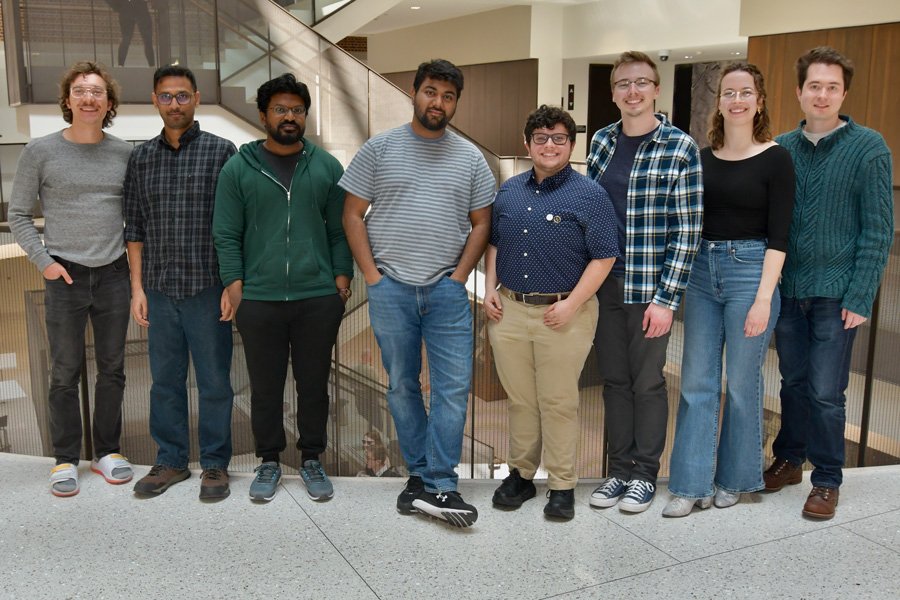
2024 Graduate Awards and Fellowships
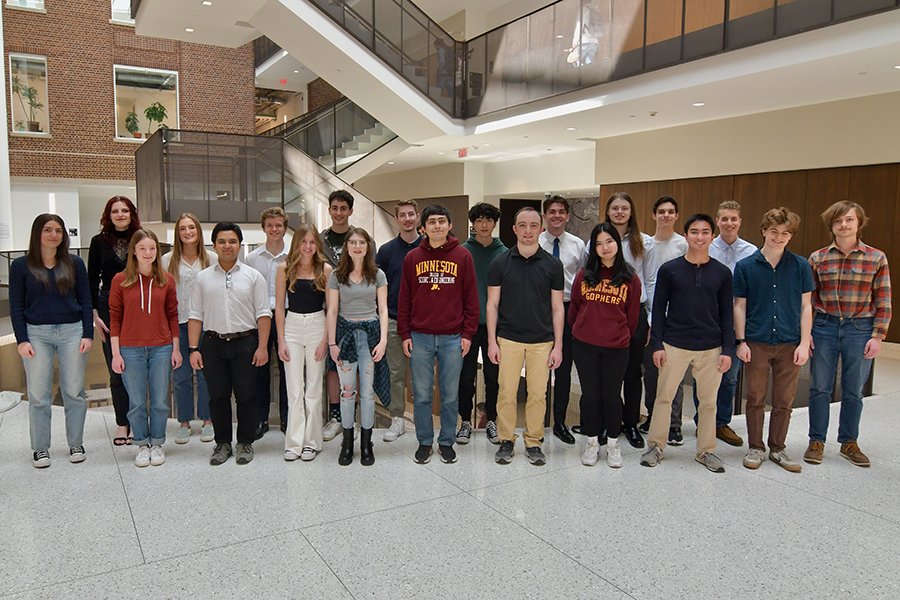
2024 Undergraduate Scholarship Recipients
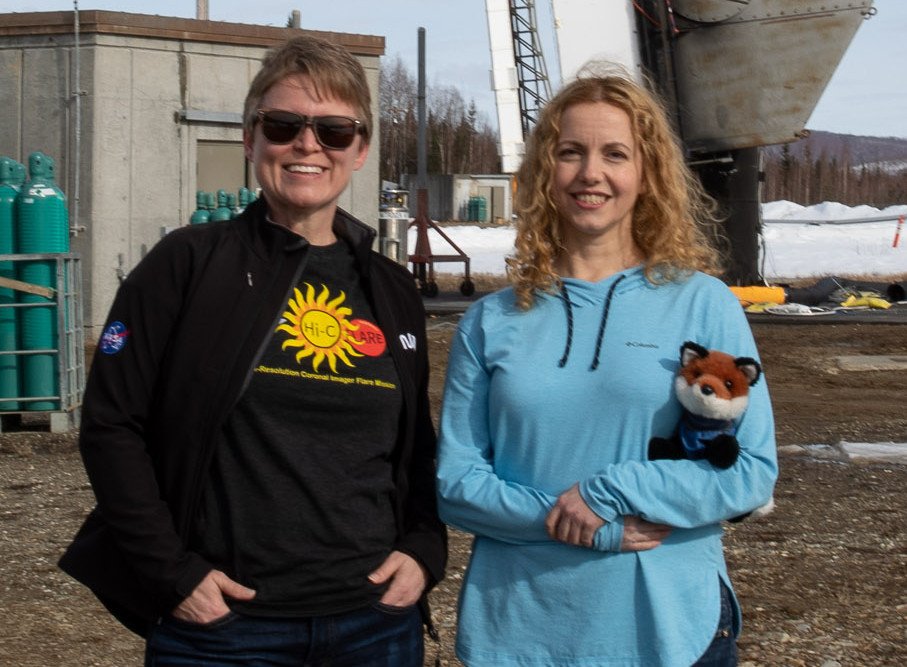
Glesener part of NASA's first solar flare observation campaign
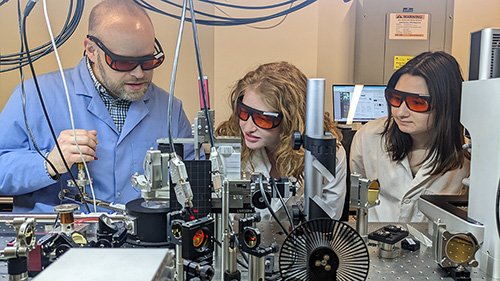
Inside Professor McLeod’s Nano-Imaging Laboratory
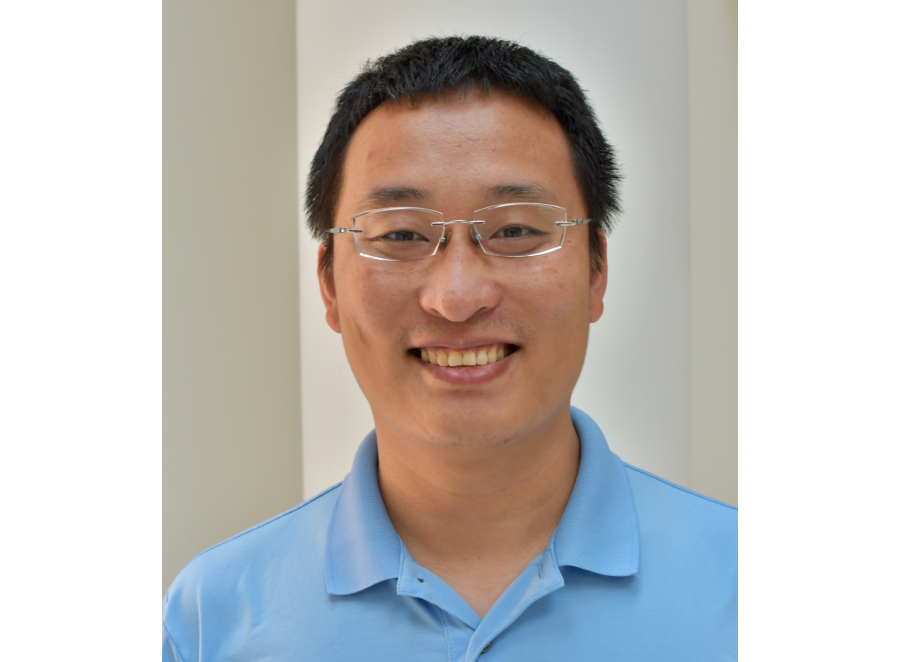
Liu receives prestigious Sloan Research Fellowship for early-career researchers
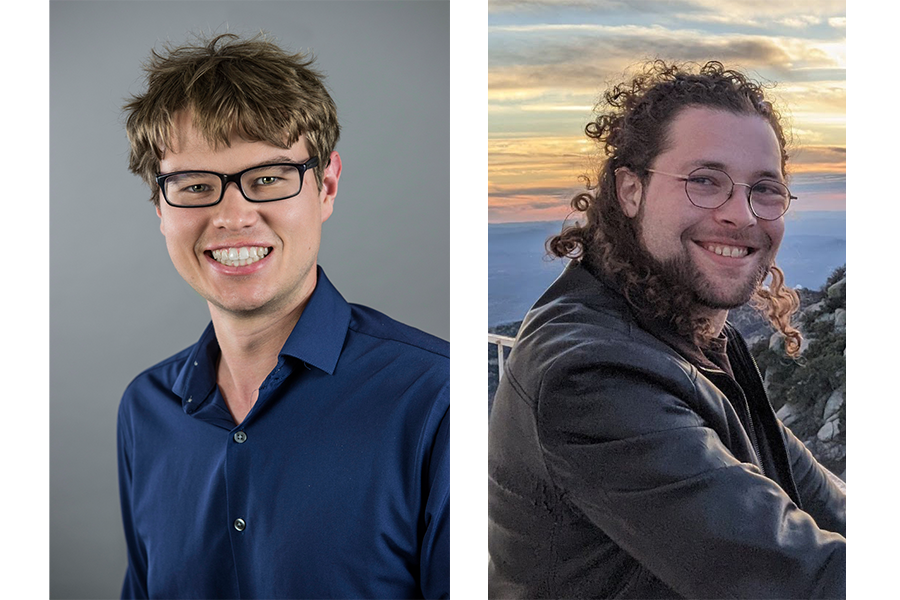
Coughlin and Criswell part of comprehensive UV light survey

Three School Alumni elected to National Academy of Engineering
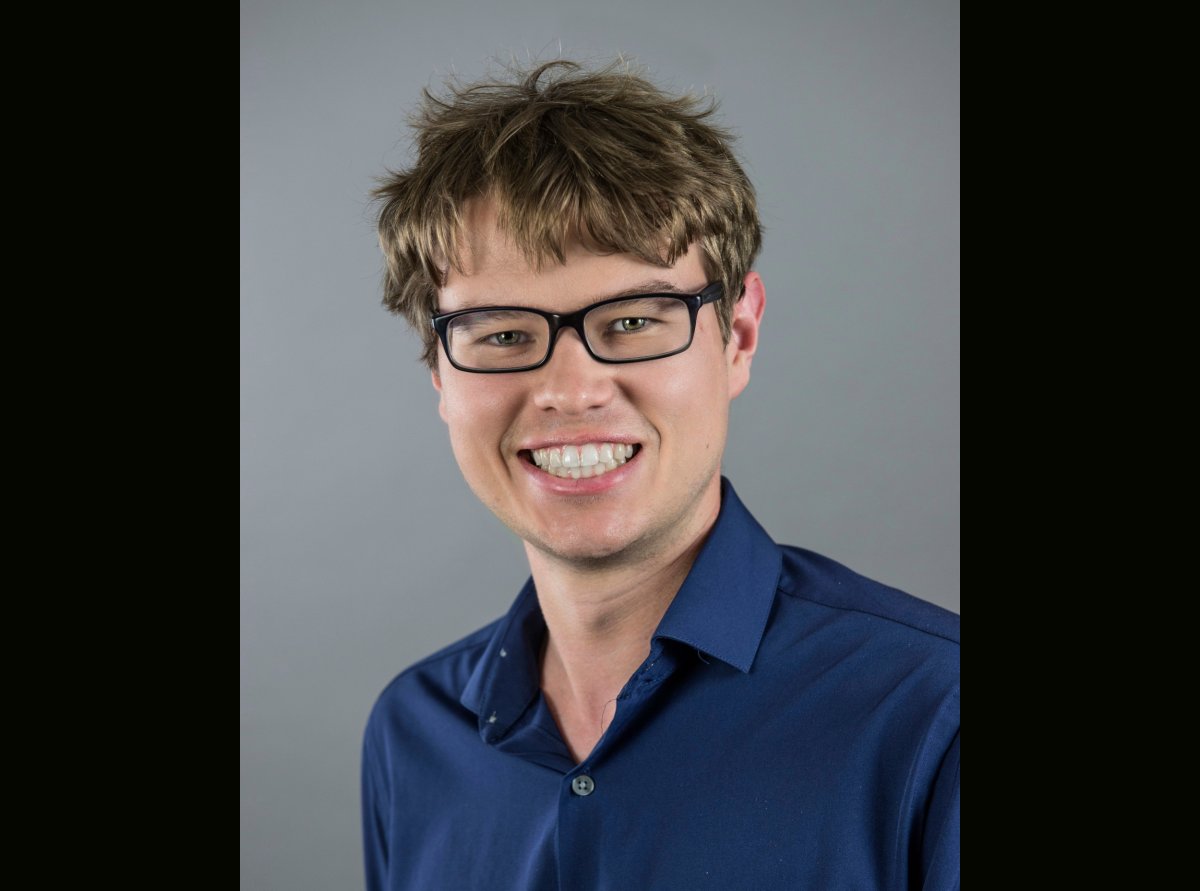
Coughlin receives McKnight Professorship

Humphreys Awarded Medal from Royal Astronomical Society
